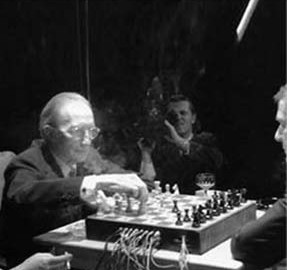Reducing the degree of automaticity that is in operation as oneself requires the adopting of an anti-expressive stance. Watching our friend M. D. liberate himself to some degree from automaticity without ever actually escaping it, we realized once and then again what each of us had somehow known from early on: artists are free only within a limited set of parameters, and life, in the form it has constructed itself into in our era, will enslave even the most self-critical of artists. Managing to position objects to hold their own in relation to that which ubiquitously happens along and even to redirect it, using very-adjusted and less-adjusted ready-made insertions into symbolizing power, an inchoate emanating-out ready-made in its own right, to convey and express enough and more than enough, M. D. changed the history of expression (read symbolizing) and redefined (artistic) purpose — two remarkable achievements. But it must be acknowledged that even critically sublime insertions meant to subdue expressivity and thus renegotiate the automaticity that rules our world will before long — for even a critical artist winds up expressing something within a context of expression, within an artworld — turn sentimental — all that which has cinematically blossomed forth will be in hardly any time at all found to have about it the cloying quality of an antique endless loop of seduction. Having conceived of infra-thin, a Western version of the concept of kehai, a colonized and colonizing air that would self-perpetuate, a hope-filled venturing toward a prolongation of that which is of interest, M. D. enters history as a precursor artist to the transhuman. As for our relation to the transhuman: Only after we had, in our decades-long research project, “The Mechanism of Meaning,” stared down automaticity (so as to open it up for reconfiguration) by diving right into symbolizing power (so as to note and provide on-the-spot elicitings of its component factors, leading tendencies, and modes of operation), did we come to see that, to escape human bondage (We have decided not to die!), we would have to transform ourselves into artist-architects, on-the-loose interdisciplinary creatures we sometimes refer to as coordinologists. We lie to say that M.D. asked us to build one of our transhuman houses for him, one whose design he wished to join in on. If death were really always only for others then you would find Duchamp today moving about within a tactically posed surround of his and our combined making.



